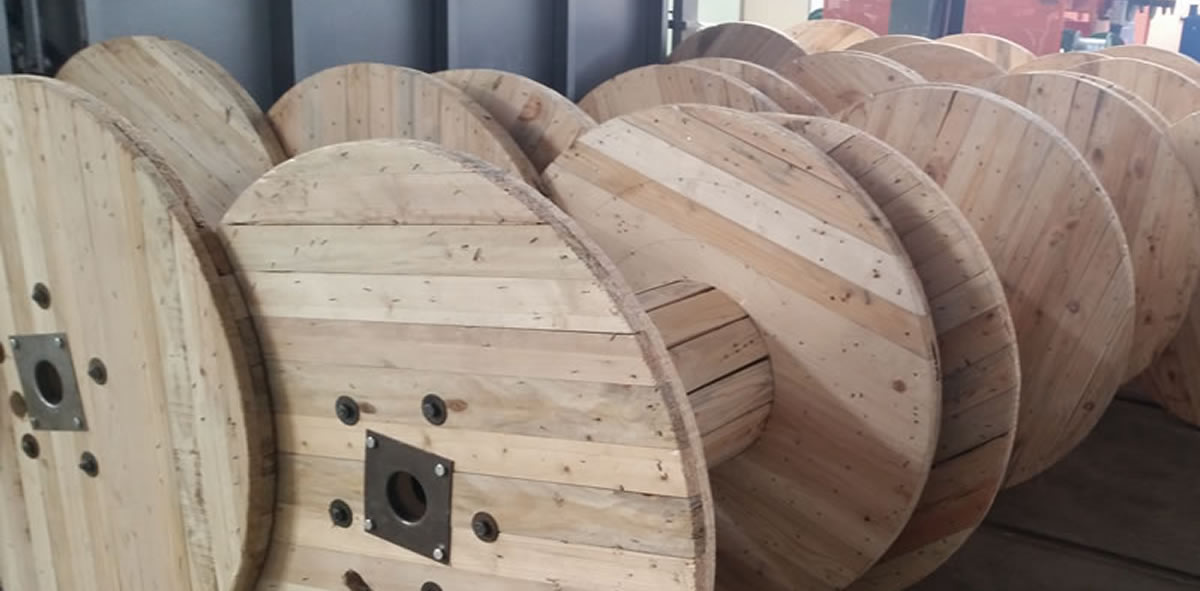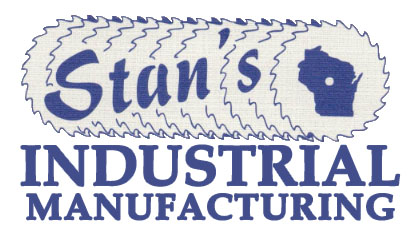Our Story
We’ve Been Saving Companies money on their wood needs for over 60 years
About Stan’s Industrial Manufacturing
In November 2021, Troy Murphy acquired Stan’s Industrial Manufacturing, ushering in a new era for a company with a long-standing reputation for excellence in the woodworking industry. Although new to the world of woodworking, Troy brought with him over 20 years of business acumen, perfectly positioning him to continue and expand upon the company’s legacy. His commitment is unwavering: to uphold and even exceed the high standards of quality that Stan’s Industrial Manufacturing has been known for since its inception.
Stan’s Industrial Manufacturing has a storied history, beginning in 1954 when Stanley Schmidt founded the company with a focus on producing grade stakes and lath. These essential products quickly became synonymous with reliability and quality in the industry. Stanley’s vision was carried forward by his son, George Schmidt, who took the reins in 1973. Under George’s leadership, the
Lori with Reels

company not only maintained its commitment to high-quality craftsmanship but also diversified its product line to include skids and wooden reels. This expansion allowed Stan’s Industrial Manufacturing to cater to a broader range of industries while maintaining its core focus on quality.
Throughout its history, the company’s success has been rooted in George’s dedication to producing high-quality products and offering exceptional customer service. Even though Stan’s Industrial Manufacturing was not the largest player in the industry, it quickly built a reputation for doing things right. The company became known for treating customers with respect, delivering reliable products, and offering competitive prices—traits that set it apart from larger competitors.
With Troy Murphy at the helm, these core values remain at the heart of Stan’s operations. The acquisition has not only preserved the company’s rich history but also infused it with new energy and innovation. Under Troy’s leadership, customers can continue to expect the same high-quality stakes and lath products that have made Stan’s Industrial Manufacturing a trusted name in the industry. The company now offers an expanded range of products, including Hardwood Pencil Point Stakes, Painted Stakes, Hardwood Lath, Lath Stakes, and Wood Grade Stakes, all crafted with the same attention to detail and quality that has defined Stan’s for decades.
Additionally, Stan’s Industrial Manufacturing has embraced modern conveniences to better serve its customers, such as accepting credit card payments over the phone, making transactions smoother and more accessible. This blend of traditional craftsmanship with contemporary service options ensures that Stan’s remains a leader in the industry.
Whether you’re in need of Survey Lath, Wooden Lath Stakes, Wood Survey Hubs, or Custom Stake Manufacturing services, Stan’s Industrial Manufacturing continues to provide products that meet the highest standards. Rooted in a tradition of excellence and propelled by innovation, Stan’s continues to offer exceptional Wood Lath Survey Stakes and Survey Lath Stakes to customers across multiple industries.
Learn more about wooden construction stakes and how they can be essential for your project.

Frequently Asked Questions
What are stakes and lath in construction?
Stakes and lath are essential building materials in construction projects. Wooden stakes are typically used as support stakes to mark boundaries, set up fencing, or reinforce structures during the early stages of construction. Lath, on the other hand, is a thin strip of wood or metal used in lath and plaster applications or as part of lath framework in older buildings. These materials are often utilized together in lath construction for drywall installation or as structural support during plastering projects, providing a durable and reliable foundation.
Our guide on stakes and lath for construction provides all the details you need.
What are the primary uses of lath in construction?
Lath plays a crucial role in lath construction, particularly in lath and plaster applications for walls and ceilings. Lath strips provide a framework for plaster or other wall materials to adhere to, improving the strength and durability of the surface. Additionally, decorative lath is used in architectural designs, adding texture and style to surfaces. In modern applications, lath for drywall installation is common, as it serves as a supportive backing, ensuring the proper attachment of building materials like plaster or drywall.
How do you install wooden stakes in construction?
Installing wooden stakes in construction requires a firm understanding of the project layout and measurements. First, mark the spots where the support stakes or fencing stakes will be placed. Drive the stake into the ground using a hammer or mallet, ensuring it is secure. In some cases, reinforcement stakes may be necessary to provide additional stability, especially if the stake will support heavy loads. These stakes are often essential in both landscape lath and construction stakes applications, providing solid points of reference and support for larger structures.
Explore the essential tools for various applications, including wood stakes and lath.
How is lath used for drywall installation?
For drywall installation, lath strips provide a foundational backing on which drywall or plasterboard is applied. The lath framework ensures that the drywall is securely attached to the wall, preventing shifting and sagging over time. This method of lath construction is commonly used in commercial buildings and large projects where durability is crucial. In addition to providing support, lath can also enhance the insulation and soundproofing of a structure, making it a preferred material for both modern and historical architecture projects.
What are the benefits of using stakes in landscaping?
Using stakes in landscaping offers numerous advantages, particularly in terms of stability and structure. Landscape lath or fencing stakes are typically used to delineate boundaries or create frameworks for garden walls and fencing. Additionally, wooden stakes serve as support stakes for trees, plants, or other landscaping features. The environmental impact of wooden stakes is often minimal, as these materials are biodegradable and can be sourced sustainably. Their versatility and durability make them a common choice for both residential and commercial landscaping projects.
How does lath contribute to plastering walls?
In plastering walls, lath serves as a crucial base that allows the plaster to adhere securely to the wall or ceiling. This technique is often used in lath and plaster systems, where lath strips are fixed to the wall studs and then coated with layers of plaster. This method creates a strong, long-lasting finish. In addition to lath for plastering walls, it is also employed in decorative lath applications for intricate architectural designs. Its flexibility and ease of use make it an essential material in lath construction for both new builds and restoration projects.
Discover the ultimate guide to lath for construction in Wisconsin to enhance your projects.
What is the difference between stakes and lath in building projects?
In construction, stakes and lath serve distinct yet complementary roles. Stakes, such as reinforcement stakes or construction stakes, are typically used for support, marking, or anchoring structures during the building process. Lath, however, is primarily used in lath framework to support materials like plaster or drywall. While stakes are used more for support stakes in outdoor projects like fencing, lath is integral to interior finishing and lath for drywall installation. Both materials are vital for the structural integrity of various construction projects, providing stability and durability.
What are some innovative uses for lath in modern design?
In modern design, lath has evolved beyond its traditional use in lath and plaster systems. Decorative lath is often employed in architectural designs, providing texture and aesthetic appeal to walls and ceilings. Lath strips can also be used in lath construction for partitions, screens, or accent features in commercial spaces. Innovative uses for lath include creating unique wall textures, enhancing acoustic properties, or adding a vintage feel to modern interiors. Additionally, lath framework is used in the creation of durable, flexible spaces, offering both form and function.
Discover how wooden stakes can be used effectively in your construction projects on HomeAdvisor.
What is the environmental impact of wooden stakes?
Wooden stakes are an eco-friendly choice for many construction and landscaping projects due to their biodegradable nature. When sustainably sourced, they have a minimal environmental impact, as the wood can naturally decompose without releasing harmful chemicals into the environment. Additionally, the production process for wooden stakes is generally low-energy compared to metal or plastic alternatives. Support stakes, fencing stakes, and landscape lath made from wood can be recycled or reused in other projects, contributing to a lower carbon footprint in building materials.
What role does lath play in historical architecture?
In historical architecture, lath was a fundamental material used in lath and plaster systems for walls and ceilings. Lath strips were attached to wall studs, providing a framework for the plaster to adhere to, creating smooth, durable surfaces. This method, common in buildings before the advent of drywall, contributed to the structural integrity and longevity of these structures. The durability of lath materials in such applications is evident, as many older buildings with lath systems still stand today. Lath in historical architecture is often considered an essential element in restoration and preservation efforts.
Find out why wooden stakes in Wisconsin are the best choice for landscaping and construction.
